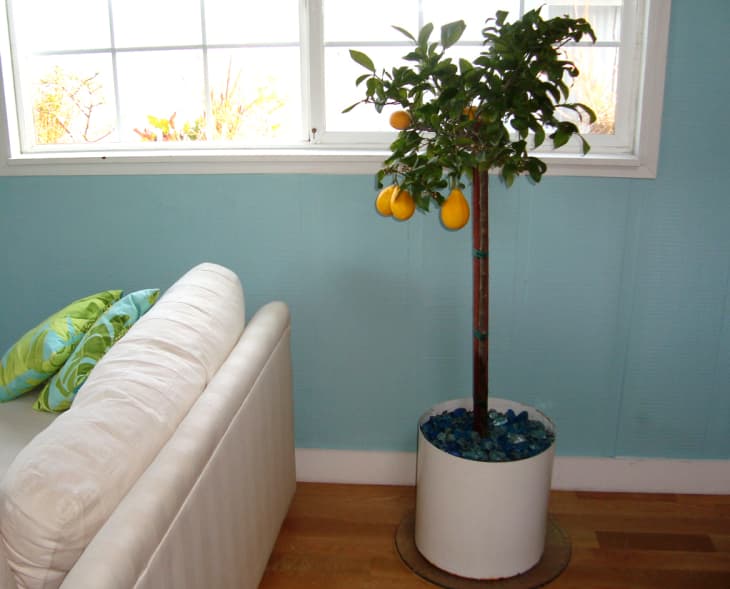Growing Citrus Indoors: 5 Helpful Tips

As someone who’s obsessed with citrus fruit, I can’t imagine not having fresh satsumas or Washington navels during the holidays. The scent of the blossoms alone will instantly put me in a good mood. For those in less ideal citrus climates, you need not feel left out! You can grow the dwarf varieties of these trees indoors and reap the benefits by following a few simple steps:
1. Buy the right tree. Calamondin Orange, Improved Meyer Lemon, Ponderosa Lemon, Eureka Lemon, Persian or Bearss Lime, Eustis Limequat, Rangpur Lime, Otaheite Orange, Nippon Orangequat are all great varieties for beginning indoor cultivators.
2. Soil needs to be the correct pH and promote proper drainage. A range of 5-8 is best. You can get a pH test kit from your local nursery. A mixture of 1 part sand, 1 part peat and 1 part bark, perlite or vermiculite will serve your tree well. The soil should be loose enough to permit adequate but not excessive drainage. Any type of pot will do, but a 1″ – 2″ layer of gravel at the bottom of the pot will most readily promote drainage.
3. Citrus trees require a minimum of 5 hour of sunlight per day. Ideally, they should get 10-12. Supplemental lighting in the form of high intensity discharge lighting can be used to maximize your yield. One important thing to keep in mind is to slowly acclimate your trees if taking them from the outdoors to indoors for winter. Though acclimation isn’t necessary if only bringing them in for a few days to prevent freezing.
4. Humidity. Citrus trees will drop their leaves if the humidity grows too low in an indoor environment. Ideal humidity should be at 45 – 50%. Use a humidifier, if necessary.
5. Regular watering is necessary for your tree’s survival. When the top 2 inches of soil are dry, water (but don’t soak) the tree. If water pools in the saucer, empty the saucer. During warm summer months, you may need to water as often as twice daily. During winter months, water much more sparingly.
Related posts:
• How To Plant and Keep an Indoor Lemon Tree
• Favorite Fragrant Plants
• 27 Household Uses For Citrus Fruit
(Image: Maria Finn for Apartment Therapy)